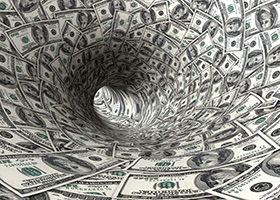


Trong’s analysis suggests that high frequency traders have a significant impact on institutional investors including higher trading costs.
While the author finds that high frequency trading provides liquidity to the market when institutions have large trade imbalances, the liquidity boost is short-lived because high frequency traders maintain zero open positions at market close. Instead, the added liquidity is offset by higher costs.
The analysis also finds a prevalence of both directional strategies and market making strategies used by high frequency traders. Both result in increased institutional trading costs Trong concludes, particularly when directional trading strategies are used.
This finding lends support to what institutional investors have long believed: that high frequency traders are anticipating their trades.
Institutions with better trading skills can reduce the adverse impact on costs Trong notes, however the overall findings suggest that a lot more research is needed on the growing impact that high frequency trading is having on the marketplace and on long-term investors. Read the full paper on the Northern Finance Association’s website.
